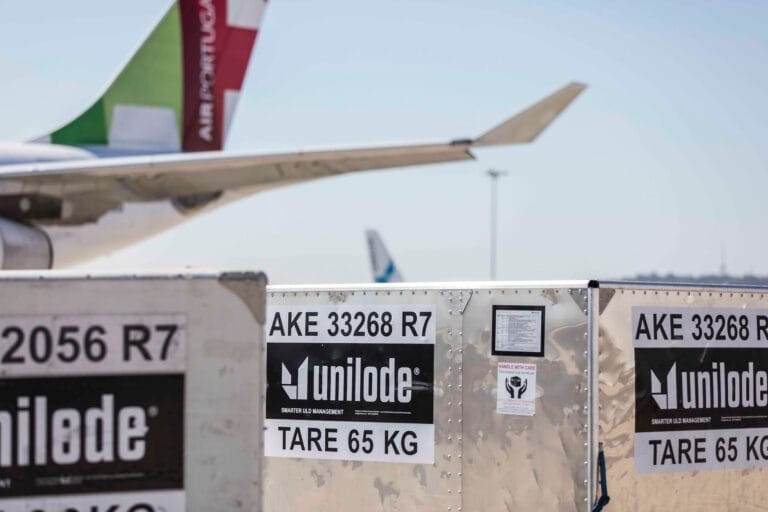- ULDs are critical to Southeast Asia’s air cargo growth, supporting e-commerce volumes, faster turnaround, and operational efficiency, with major hubs like Singapore and Hong Kong leading in digital adoption while other markets invest in infrastructure upgrades
- Managing pooled ULD fleets across airports and airlines introduces complexity, requiring digital tracking, real-time visibility, predictive analytics, and sensor-based monitoring to ensure asset utilisation, maintenance, and shipment integrity
- Regulatory differences and sustainability pressures add further challenges, making automated compliance, cross-platform visibility, and environmentally conscious ULD practices essential for scaling operations and maintaining service reliability across the region
ULDs don’t usually make headlines, but in Southeast Asia’s freight sector, these anonymous metal containers and pallets are an essential part of the value chain. With cross-border e-commerce driving record volumes, regional airports are grappling with surging throughput, tighter turnaround times, and rising operational strain. Behind the scenes, how Unit Load Devices are tracked, maintained, and moved is quickly becoming a litmus test for how well the region’s cargo infrastructure is coping with growth.
Major hubs like Singapore and Hong Kong continue to perform, thanks to mature infrastructure and strong digital adoption. But the rest of Southeast Asia is still playing catch-up. “Southeast Asia’s infrastructure is undergoing rapid transformation,” says Janis Balkens, Chief Operations Officer at Unilode Aviation Solutions. He highlights Vietnam, Indonesia, and the Philippines as key markets investing in upgrades, especially to support e-commerce growth.
Yet the pace of change may not be fast enough. “High cargo load factors and backlogs at origin airports highlight potential strain,” Balkens adds. “Ongoing investment in automation and digitalisation is critical.”
Complexity at ground level
Beneath the surface of booming trade lies a fragmented operational landscape. ULD fleets are increasingly pooled and shared across airlines, meaning they’re constantly in motion, across borders, operators, and vastly differing levels of infrastructure.
“Managing pooled ULD fleets in Southeast Asia involves challenges… from varying airport infrastructure, differing regulations, and the complexity of repositioning assets,” says Balkens. This complexity is compounded by inconsistent maintenance standards and patchy tracking capabilities across the region.
It’s a problem not just of volume, but of coordination. And as air cargo networks grow more interdependent, tracking invisible assets like ULDs is becoming as important as scanning the shipments they carry.
Data-driven or data-blind?
In theory, digital tracking should be solving these issues. In practice, adoption is uneven. “We are seeing a growing demand… driven by the region’s rapid air cargo growth and the need for enhanced operational efficiency and visibility through integration of various systems,” Balkens says.
That demand is being met in some places. Advanced tracking systems now provide real-time visibility on ULD location, movement, and even environmental exposure. Balkens points to tags that monitor “temperature, humidity, shock, and light exposure, accessible via mobile app or customer portal.” The benefits are tangible: faster turnaround times, proactive maintenance, shipment integrity and fewer misplaced assets.
But much of the region still lacks such tools. “Ensuring consistent maintenance quality and integrating digital tracking across diverse locations requires significant coordination,” he notes. Without digital parity across airports and operators, tracking gaps will remain—and so will delays and inefficiencies.
When units disappear
In a sector where time is everything, even a single lost ULD can derail schedules. Balkens shares an incident that illustrates the value of digital traceability: “One of our airline customers recently flew a ULD into Melbourne… after a breakdown, both the airline and ground handler lost visibility. It was digitally tagged, so we traced it to South America and confirmed which airline had last used it.”
That kind of loss-tracking recovery used to take days, or weeks. Now it can take minutes, if the digital infrastructure is in place. But many regional operators still work with paper logs or siloed systems, delaying response time when something goes wrong.
The shift in consumer expectations is relentless. e-commerce volumes aren’t just growing—they’re reshaping the demands on cargo operators. What once was a predictable pattern of movement is now a volatile, high-frequency flow that strains older systems.
“Flexible short-term leasing options enable scalable asset availability to meet fluctuating demand,” says Balkens, noting the need to match asset supply to unpredictable traffic spikes. Static planning cycles are being replaced by agile models that can adapt mid-month or mid-week.
It’s not just about having more ULDs. It’s about knowing where they are, the utilisation, and accurate stock balancing. This is where predictive analytics and sensor-based condition monitoring are starting to play a larger role.
“Real-time data supports proactive planning… enabling our customers to identify potential issues before shortage or service failures occur,” says Balkens. This ensures service delivery and reduces costly downtime through increased utilisation. But again, the benefits hinge on digital maturity – and that remains patchy across the region.
More tech, more regulation
One under-discussed friction point is regulatory variance. While some countries push for digital standards, others lag behind or introduce new red tape that complicates movement.
“Regulations and customs procedures vary widely… from India’s new rules on tracked ULDs to Europe’s stricter pre-loading cargo information requirements,” says Balkens. Operators must incorporate compliance into their systems by design, not bolt it on afterwards.
Unique ULD identifiers, automated data capture, and cross-platform visibility can smooth compliance. But the burden often falls on the operator to absorb the complexity, particularly in border-heavy regions like ASEAN.
Beyond operational pressure, there is also environmental pressure. As the industry pledges carbon reductions, ULDs, often overlooked in sustainability strategies, are getting a second look. Balkens points to practices like reusing approved parts, repairing over replacing, and designing lighter-weight containers. “This approach minimises environmental impact while helping customers achieve their own sustainability goals,” he says.
Digital ULDs through Unilode pooling can also reduce repositioning needs, shrinking emissions from empty movements. But again, the return depends on digital infrastructure that still doesn’t exist at scale in many Southeast Asian airports.
Southeast Asia has proven its potential as a manufacturing and logistics powerhouse. But if the region wants to hold that edge in the next decade, invisible assets like ULDs need to be brought into sharper focus.




